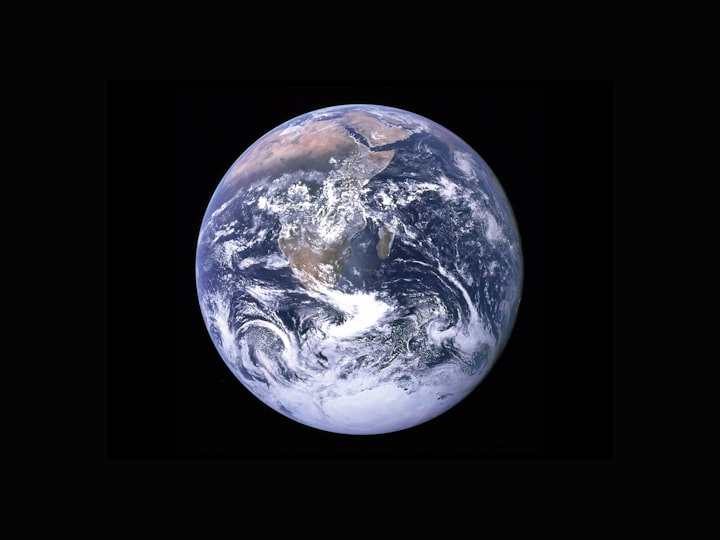
1. If you dropped Saturn in water, it would float.
2. If you took a pin-sized portion of the sun and placed it on the earth, you would die within 145km (90 miles) of it.
3. Space is not a perfect vacuum. There are about three atoms per cubic meter.
4. Only 5% of the universe is made up of ordinary matter, the remaining 25% is dark matter and 70% is dark energy.
5. Atomic stars are so dense that a spoonful of them has about the mass of all the people on Earth.
6. The sun is 400 times bigger than the moon, but it is also 400 times farther away, making them look about the same size.
7. The Centauri Star Lucy is a diamond weighing 10 to the 34th power.
8. On Uranus, each season lasts 21 years and the poles have 42 years of day and night, respectively.
9. Venus, on the other hand, has no seasons at all (because its rotation period is the same as its revolution period).
10.1 Mercury years consist of less than two Mercury days.
11. The number of oxygen atoms in a breath is roughly equal to the number of breaths available to the atmosphere.
12. Helium is the only thing in the universe that doesn't freeze. It doesn't get that cold.
13. The coldest place on Earth is the Wolfgang Ketterles Lab in Massachusetts, with temperatures as low as 0. 000000000001 Kelvin.
14. Pistol Star is the brightest star known, about 10 million times brighter than the Sun.
15. Saturn's moon Titan has a liquid ocean of natural gases.
16. (According to one leading hypothesis) all the solar system's planets are about the same age: 4.544 billion years.
17. The moon probably formed after an early planet, called Theia, crashed into Earth.
18. There are about eight thousand planets visible to the naked eye from Earth, four thousand in each hemisphere and two thousand by day and night.
19More than ninety percent of the ordinary matter in the universe is hydrogen.
20. Only 55% of Americans know that the Sun is a star.
21. Given the speed at which the sun moves, a solar eclipse can last a maximum of 7 minutes and 58 seconds.
22. A lunar eclipse can last an hour and 40 minutes!
23. All the coal, oil, gas, wood and other energy sources on Earth combined can only keep the sun burning for a few days.
24. A full moon is nine times brighter than a half moon.
25. If the moon is right over your head or you're standing on the equator, you're a little lighter than usual.
26. A single quasar produces about as much energy as a trillion SUNS.
27. For a short time after the Big Bang, everything in the universe was liquid.
28. A Planet nicknamed "The Genesis Planet" is 12.7 billion years old, making it The oldest Planet ever discovered
29. The shape of the universe looks a lot like a brain cell.
30. Every year, the moon moves 3.8cm away from the Earth.
31. The moon's rotation period is the same as its revolution period, so that we always see the same side of the moon.
32. υ And B in Andromeda also always turned one side of itself toward its star, the other as hot as magma, the other as cold as an icebox.
33. The average nebula has "only" 40 billion stars.
34. Astronomers don't get taller in space, but their hearts get smaller.
35. The surface of Mars is covered with iron oxides (rust).
36. Only one in two billion of the energy released by the sun reaches the Earth.
37. Rogue planets are not bound to any star, brown dwarf, or another planet, allowing them to float freely through the galaxy.
38. Sweeps 10 is the shortest planet with known orbital period, sweepstakes 10 takes about 10 hours to complete one sweep of its star.
39. Eighty-five percent of the stars in our galaxy are multistar systems.
40. Some brown dwarfs rain liquid iron.
41. The light emanating from the sun is 30,000 years old (it takes time to travel from the sun's core to its surface).
42. Of the 20 million meteors observed each day, only one or two reach the surface.
43. There are about 3,500 astronomers in the United States, but there are about 15,000 astrologers.
44. The closest black hole to Earth is a mere 1,600 light-years away.
45. There are at least 10^24 stars in the universe.
46. Several "earthquakes" were observed on the neutron star.
47. In outer space, free-flowing liquids form a ball due to surface tension.
48. The number of people hit and killed by falling cosmic debris is about one in five billion.
49. Neutron stars can spin an additional 500 times per second.
50. The largest known structure in the universe is the Sloan Great Wall, a giant collection of galaxies 1.37 billion light-years across.





Comments
There are no comments for this story
Be the first to respond and start the conversation.